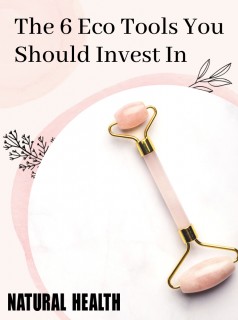Women’s health expert Dr Marilyn Glenville looks at how to lower your risk of developing osteoporosis
One in three women aged 45 and over now suffers with osteoporosis and the worrying fact is that many cases go undiagnosed until bone fractures occur. However, the good news is that this condition is treatable and preventable . Here’s how to lower your risk of developing osteoporosis and ensure that your bones remain healthy and strong.
1. Have an ultrasound bone scan
If you think you may be at risk of osteoporosis or want to prevent it, then the first thing you should do is to have a bone scan. You may have to organise this privately as it is not easy to get one on the NHS but the ultrasound will highlight any bone health problems that may exist, and also means you avoid unnecessary exposure to the X-rays of a DEXA scan, if the results turn out to be normal.
2. Have a DEXA scan
A DEXA scan looks at the density of bone in your hip and spine. If you have already had an ultrasound scan that shows signs of osteoporosis and you have other risk factors then you might be lucky enough to get a referral for a DEXA scan on the NHS. You should discuss the results with your doctor as you will almost definitely need medical treatment for osteoporosis.
3. Have a bone turnover test
A bone turnover test cannot diagnose osteoporosis but it does look at the rate of bone loss.
This simple non-invasive urine test measures markers in the urine that are excreted as bone breaks down. If the results of your bone scan show up as either normal or osteopenic your bone turnover results will allow you to see whether or not you are losing bone rapidly on a daily basis.
If your bone turnover is high, action needs to be taken immediately to reduce bone loss and to work on preventing full-blown osteoporosis from developing. If your bone turnover is normal, repeat the test every six months to ensure it stays that way.
If your bone scan shows that you do have osteoporosis, then by looking at your bone turnover before you start taking your medication, you will get a baseline assessment of your bones’ rate of resorption before the drug takes effect.
If you then repeat the test six weeks after starting your medication, you will be able to see whether or not the drugs are working.
4. Have a mineral analysis test
This simple test assesses any deficiencies in the main minerals (calcium, magnesium, zinc). One way of carrying out this test is via a hair sample. A high level of calcium in your hair can indicate that calcium is being leached from your bones and dumped in your hair. Hair mineral analysis can assess both deficiencies and excesses in calcium as well as other important minerals such as magnesium, zinc, copper, selenium, chromium, sodium, phosphorus and manganese. It also measures the levels of toxic metals such as mercury, cadmium and aluminium.
5. Analyse your digestive system
A good, efficient digestive system is crucial in the fight against osteoporosis. Having any of these symptoms could indicate that a test for digestive function would be useful:
Do you often feel bloated or have wind?
Do you have irritable bowel symptoms, nervous stomach or loose stools?
Are you allergic to any foods?
Have you ever taken an antibiotic for more than a month at a time or have you taken them more than four times in your life?
Have you ever taken the Pill, HRT or steroids for extended periods of time?
Do you have abdominal cramps or pain?
Do you get heartburn or indigestion?
6. Reduce stress
Stress is bad for your bones. Your adrenal glands pump out a number of hormones, one of which is cortisol. Even slightly raised levels of cortisol can increase the risk of fractures, so it is important that stress is controlled. A non-invasive saliva test, called an Adrenal Stress Index, can measure your cortisol levels. If the test shows your adrenal glands and hormones are out of balance, you will be given recommendations and supplements to get them working appropriately.
7. Look at your diet
Diet plays a critical role in the prevention and treatment of osteoporosis. If your bone density is either normal or osteopenic you should maintain a good, healthy diet that will not only help prevent osteoporosis but will also benefit your general health. If your bone density is osteoporotic, try to switch to and stay with an alkaline diet on a daily basis.
8. Take food supplements
If your bone density is normal or osteopenic, it is advisable to follow a good programme of supplements to give you enough of the important nutrients to keep your bones healthy and prevent osteoporosis.
If you are osteoporotic, your need for certain vitamins and minerals will be higher. For good quality supplements go to www.naturalhealthpractice.com
If your digestion and absorption have been tested and found to be inefficient it is important to take steps to address this; you could be eating a wonderful diet and taking the best supplements in the world, but if your body is not absorbing them it is a wasted effort.
9. Step up your exercise
Exercise needs to be a priority, not just for your bones but for every aspect of your general health. If your bones are normal, focus your exercise routine on prevention. Choose exercises that you enjoy and will keep up on a weekly basis.
If your bones are osteopenic, exercise is a bigger priority. You can increase your bone density using a combination of weight-bearing exercise and weight training.
If your bones are already osteoporotic, exercise is still a priority for you, but you must take care that the exercise you are doing is not causing further damage, and that it is safe for your bones. Walking is great exercise, while classes such as Pilates could be helpful with guidance given by an instructor.
10. Men and osteoporosis
One in nine men are susceptible to developing osteoporosis. The condition is less common in men because of differences in the changes in bone density with age. While men do not experience the rapid loss of bone around the age of 50 that women do, there is a decline but it is much more gradual. It is mirrored by a lowering of sex hormones as they get older. Testing for osteoporosis is the same for men and women but it is important to isolate the cause. If the cause is found to be low testosterone or an overactive thyroid, treatment can be targeted appropriately. If no cause is found, bisphosphonate drugs are routinely prescribed to affected men.
Article by
Dr Marilyn Glenville
Nutritionist
is a nutritionist specialising in women’s health. Visit marilynglenville.com
Discover more
Article by
Dr Marilyn Glenville
Nutritionist
is a nutritionist specialising in women’s health. Visit marilynglenville.com
Discover more


 By Dr Marilyn Glenville
By Dr Marilyn Glenville 




















